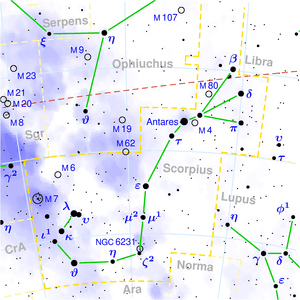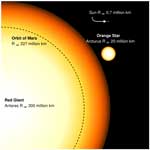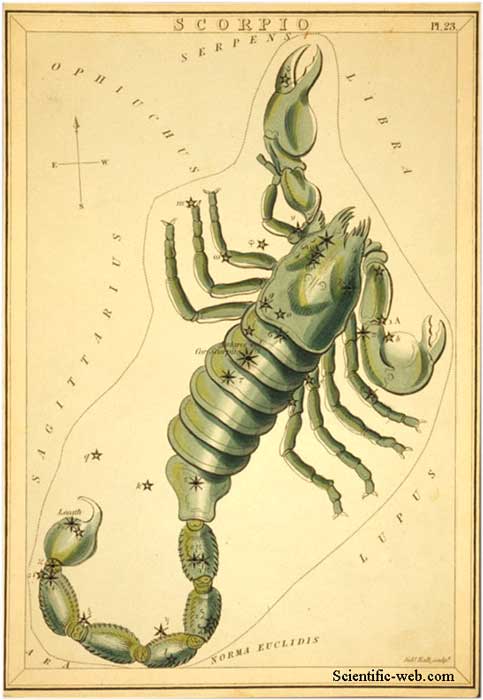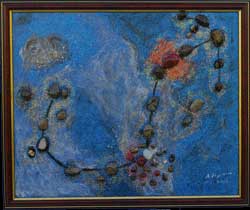
|
Scorpius (Latin for scorpion, symbol , Unicode ♏) is one of the constellations of the zodiac. In western astrology it is known as "Scorpio". It lies between Libra to the west and Sagittarius to the east. It is a large constellation located in the southern hemisphere near the center of the Milky Way. Notable features
The red supergiant Antares Scorpius contains many bright stars, including Antares (α Sco), β1 Sco (Graffias), δ Sco (Dschubba), θ Sco (Sargas), λ Sco (Shaula), ν Sco (Jabbah), ξ Sco (Grafias), π Sco {Iclil), σ Sco (Alniyat), τ Sco (also known as Alniyat) and υ Sco (Lesath). The star once designated γ Sco (despite being well within the boundaries of Libra) is today known as σ Lib. λ Sco and υ Sco, two stars at the end of the scorpion's tail that appear very close together, are sometimes referred to as the Cat's Eyes. PSR B1620-26c, extrasolat planet Notable deep sky objects Due to its location on the Milky Way, this constellation contains many deep sky objects such as the open clusters Messier 6 (the Butterfly Cluster) and Messier 7 (the Ptolemy Cluster), and the globular clusters Messier 4 and Messier 80. Also in the southern end of the constellation by ζ² Sco, there is the open star cluster NGC 6231. Mythology Scorpius resembles, quite noticeably, a scorpion's tail, and a vague body. According to Greek mythology, it corresponds to the scorpion which was sent by the goddess Hera (or possibly Gaia) to kill the hunter Orion, the scorpion rising out of the ground to attack. although the scorpion and Orion appear together in this myth, the constellation of Orion is almost opposite to Scorpius in the night sky. It has been suggested that this was a divine precaution to forestall the heavenly continuation of the feud. In one version, Apollo sent the scorpion after Orion, having grown jealous of Artemis' attentions to Orion. Later, in contrition for killing her friend, Apollo helped Artemis hang Orion's image in the night sky. However, the scorpion was also placed up there, and every time it appears on the horizon, Orion starts to sink into the other side of the sky, still running from the attacker. Scorpius also appears in one version of the story of Phaethon, the mortal son of Helios, the sun. Phaethon asked to drive the sun-chariot for a day. Phaethon lost control of the chariot. The horses, already out of control, were scared by the great celestial scorpion with its sting raised to strike, and the inexperienced boy lost control of the chariot, as the sun wildly went about the sky (this is said to have formed the constellation Eridanus). Finally, Zeus struck him down with a thunderbolt to stop the rampage. The Chinese included these stars in the Azure Dragon, a powerful but benevolent creature whose rising heralded spring. In Maori mythology, this constellation can be Maui's magic jawbone (used to fish up the North Island of New Zealand), the front of Tama-rereti's waka (used to ferry the stars into the sky) or one of the posts Tane used to hold Ranginui (the sky-father) in the sky. While three posts (Sirius, Matariki/The Pleiades and Orion) hold up the top half of Ranginui, only a single post (Scorpius) supports the lower half of his body. It therefore appears bent under the weight. Astrology The Western astrological sign Scorpio of the tropical zodiac (October 23–November 23) differs from the astronomical constellation and the Hindu astrological sign of the sidereal zodiac (November 16–December 16). Astronomically, the sun is in Scorpius from November 23–November 30. Scorpius corresponds to the nakshatras Anuradha, Jyeshtha, and Mula
References * Ian Ridpath and Wil Tirion (2007). Stars and Planets Guide Links
Retrieved from "http://en.wikipedia.org/"
|
|
||||||||||||||||||||||||||||||||||||||||||||||||||||



